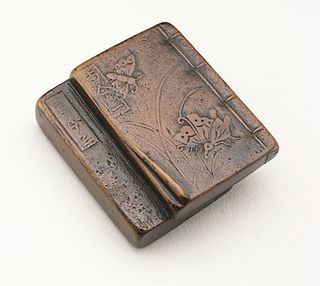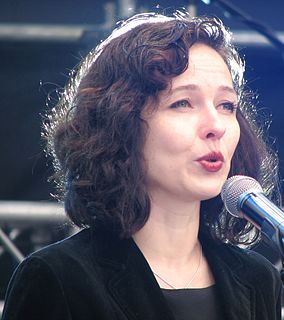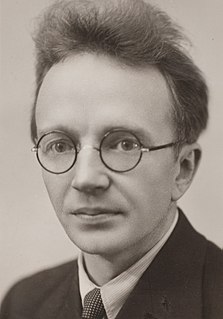Related Research Articles

Imagism was a movement in early-20th-century Anglo-American poetry that favored precision of imagery and clear, sharp language. It gave modernism its first start, and is considered to be the first organized modernist literary movement in the English language. Imagism is sometimes viewed as "a succession of creative moments" rather than a continuous or sustained period of development. René Taupin remarked that "it is more accurate to consider Imagism not as a doctrine, nor even as a poetic school, but as the association of a few poets who were for a certain time in agreement on a small number of important principles".
The Movement was a term coined in 1954 by J. D. Scott, literary editor of The Spectator, to describe a group of writers including Philip Larkin, Kingsley Amis, Donald Davie, D. J. Enright, John Wain, Elizabeth Jennings, Thom Gunn and Robert Conquest. The Movement was essentially English in character; poets from other parts of the United Kingdom were not involved.
In book publishing, an anthology is a collection of literary works chosen by the compiler; it may be a collection of plays, poems, short stories, songs or excerpts by different authors.
The Language poets are an avant-garde group or tendency in United States poetry that emerged in the late 1960s and early 1970s. The poets included: Leslie Scalapino, Stephen Rodefer, Bruce Andrews, Charles Bernstein, Ron Silliman, Barrett Watten, Lyn Hejinian, Tom Mandel, Bob Perelman, Rae Armantrout, Alan Davies, Carla Harryman, Clark Coolidge, Hannah Weiner, Susan Howe, James Sherry, and Tina Darragh.
"The British Poetry Revival" is the general name given to a loose poetry movement in Britain that took place in the 1960s and 1970s. The revival was a modernist-inspired reaction to the Movement's more conservative approach to British poetry. The poets included an older generation - Bob Cobbing, Paula Claire, Tom Raworth, Eric Mottram, Jeff Nuttall, Andrew Crozier, Lee Harwood, Allen Fisher, Iain Sinclair—and a younger generation: Paul Buck, Bill Griffiths, John Hall, John James, Gilbert Adair, Lawrence Upton, Peter Finch, Ulli Freer, Ken Edwards, Robert Gavin Hampson, Gavin Selerie, Frances Presley, Elaine Randell, Robert Sheppard, Adrian Clarke, Clive Fencott, Maggie O'Sullivan, Cris Cheek, Tony Lopez and Denise Riley.

Japanese poetry is poetry typical of Japan, or written, spoken, or chanted in the Japanese language, which includes Old Japanese, Early Middle Japanese, Late Middle Japanese, and Modern Japanese, as well as poetry in Japan which was written in the Chinese language or ryūka from the Okinawa Islands: it is possible to make a more accurate distinction between Japanese poetry written in Japan or by Japanese people in other languages versus that written in the Japanese language by speaking of Japanese-language poetry. Much of the literary record of Japanese poetry begins when Japanese poets encountered Chinese poetry during the Tang dynasty. Under the influence of the Chinese poets of this era Japanese began to compose poetry in Chinese kanshi); and, as part of this tradition, poetry in Japan tended to be intimately associated with pictorial painting, partly because of the influence of Chinese arts, and the tradition of the use of ink and brush for both writing and drawing. It took several hundred years to digest the foreign impact and make it an integral part of Japanese culture and to merge this kanshi poetry into a Japanese language literary tradition, and then later to develop the diversity of unique poetic forms of native poetry, such as waka, haikai, and other more Japanese poetic specialties. For example, in the Tale of Genji both kanshi and waka are frequently mentioned. The history of Japanese poetry goes from an early semi-historical/mythological phase, through the early Old Japanese literature inclusions, just before the Nara period, the Nara period itself, the Heian period, the Kamakura period, and so on, up through the poetically important Edo period and modern times; however, the history of poetry often is different from socio-political history.
The New Apocalyptics were a poetry grouping in the United Kingdom in the 1940s, taking their name from the anthology The New Apocalypse (1939), which was edited by J. F. Hendry (1912–1986) and Henry Treece. There followed the further anthologies The White Horseman (1941) and Crown and Sickle (1944).
Renku, or haikai no renga, is a Japanese form of popular collaborative linked verse poetry. It is a development of the older Japanese poetic tradition of ushin renga, or orthodox collaborative linked verse. At renku gatherings participating poets take turns providing alternating verses of 17 and 14 morae. Initially haikai no renga distinguished itself through vulgarity and coarseness of wit, before growing into a legitimate artistic tradition, and eventually giving birth to the haiku form of Japanese poetry. The term renku gained currency after 1904, when Kyoshi Takahama started to use it.
Poetry.com is a domain name that has historically been used for poetry-sharing in various forms.
Ervin Hatibi, Albanian poet, essayist and painter. Hatibi was born in Tirana, Albania, on May 31, 1974. At the age of 14, Hatibi published his first poems in the literary pages of the main newspapers of the epoch. His first poetry collection Përditë Shoh Qiellin, Naim Frashëri, Tirana prefaced by Ismail Kadare, was published in 1989 when he was only 15 and was widely acclaimed by the critics of the communist regime. At that time, following the sudden fame of the young author and his grooming as future national poet of the communist state, the National Film Studios of Albania "Shqiperia e Re", produced a documentary film on his works, entitled "The 15 Year Old Poet".

Elo Viiding is an Estonian poet.
Nationality words link to articles with information on the nation's poetry or literature.
Nationality words link to articles with information on the nation's poetry or literature.
Nationality words link to articles with information on the nation's poetry or literature.
Estonian literature is literature written in the Estonian language The domination of Estonia after the Northern Crusades, from the 13th century to 1918 by Germany, Sweden, and Russia resulted in few early written literary works in the Estonian language. The oldest records of written Estonian date from the 13th century. Originates Livoniae in Chronicle of Henry of Livonia contains Estonian place names, words and fragments of sentences. The Liber Census Daniae (1241) contains Estonian place and family names. The earliest extant samples of connected Estonian are the so-called Kullamaa prayers dating from 1524 and 1528. The first known printed book is a bilingual German-Estonian translation of the Lutheran catechism by S.Wanradt and J. Koell (1535). For the use of priests an Estonian grammar was printed in German in 1637. The New Testament was translated into southern Estonian in 1686. The two dialects were united by Anton Thor Helle in a form based on northern Estonian. Writings in Estonian became more significant in the 19th century during the Estophile Enlightenment Period (1750–1840).

Paul Viiding was an Estonian poet, author and literary critic.

Elisabet "Betti" Alver, was one of Estonia's most notable poets. She was among the first generation to be educated in schools of an independent Estonia. She went to grammar school in Tartu.
Kersti Merilaas was an Estonian poet and translator. In addition, she wrote poems and prose for children and plays.

Heiti Talvik was an Estonian poet.

Robert Sullivan is a Māori poet, academic and editor. His published poetry collections include Jazz Waiata (1990), Star Waka (1999) and Shout Ha! to the Sky (2010). His books are postmodern, explore social and racial issues, and explore aspects of Māori culture and history.
References
- ↑ Cornelius Hasselblatt, History of Estonian literature, Berlin, New York 2006. ISBN 3-11-018025-1, p. 507-514